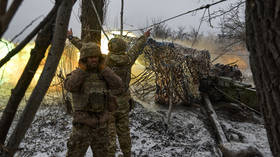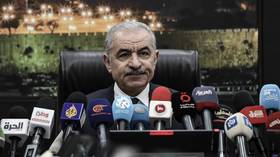Ukraine doesn’t have enough trained F-16 pilots – White House
The US-made fighter planes would not have been a game-changer for Kiev’s doomed counteroffensive, a top adviser has said

The early delivery of US fighter jets would not have changed the course of Ukraine’s failed summer counteroffensive because there were not enough trained pilots to fly them, White House National Security Adviser Jake Sullivan has said.
Speaking to ABC News on Sunday, Sullivan disagreed with the narrative that the White House did not provide enough “war-fighting equipment” for Ukraine to succeed on the front line.
“The idea that we did not mobilize a massive quantity of resources and capabilities to deliver to Ukrainians simply doesn’t wash,” Sullivan said in response to a question on whether Washington’s incremental approach to deliveries of advanced weaponry was to blame for Ukraine’s lack of progress on the battlefield.
“If you look at some total of what the United States provided to Ukraine in this fight it is an incredible quantity of material delivered at speed, at scale outpacing the expectation,” he argued.
“There are additional capabilities that Ukrainians have looked for, F-16 being one of them,” he continued, explaining that while the US is prepared to provide the jets, the real challenge Ukraine faces is that “there aren’t many pilots to be able to pilot those aircraft.”
Kiev has repeatedly asked for Western fighter jets, saying they are needed to repel Russian air attacks.
In August, the US allowed Denmark and the Netherlands to donate F-16s to Ukraine, with the first deliveries expected this year. NATO member states also agreed to form a coalition to help train Ukrainians to fly the Western-made aircraft.
Moscow has warned that the move would be a dangerous escalation, given that some F-16 modifications can carry nuclear bombs, and vowed to destroy the jets in Ukraine if they arrive.
Ukrainian general reveals rift between army and government

- He noted that army officials were troubled by demands from the government in Kiev, which wanted them to draw “a road map for victory without telling them the amount of men, ammunition and reserves they would have to execute any plan.”
Nazarov’s comments echoed the remarks of his ex-boss prior to his sacking. In an opinion piece for CNN earlier this month, Zaluzhny blasted “imperfections of the regulatory framework,” as well as the partial monopolization of the national defense industry, which he said resulted in production bottlenecks and exacerbated dependence on foreign arms shipments.
In his November article for the Economist, the former top commander also suggested that the conflict was at “a stalemate,” with both sides having the technological capability to know what the other one is doing, making any advances on the battlefield problematic.
Zelensky fired Zaluzhny, who oversaw Ukraine’s botched counteroffensive las year, and several other top commanders earlier this month. The Ukrainian president has described the decision as “a reboot,” noting that “some things were not changing over the recent period of time.” Some media reports, however, suggested that Zelensky wanted to get rid of Zaluzhny as a potential political rival who was popular with the rank and file.
Zaluzhny was replaced by General Aleksandr Syrsky, whom Politico described as a “butcher” unpopular with the troops who supposedly resented his willingness to throw them into “fruitless assaults.”
Even before Ukraine’s chaotic retreat from the strategic Donbass city of Avdeevka, Syrsky admitted that Kiev was in a “difficult” frontline situation. He has also said that Ukraine has now “transitioned” from offensive actions to strategic defense.
However, commenting on the top brass reshuffle, Kremlin spokesman Dmitry Peskov noted that Moscow did not expect it to have any significant impact on the battlefield.
CC








No comments:
Post a Comment